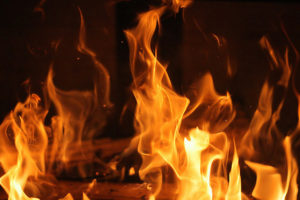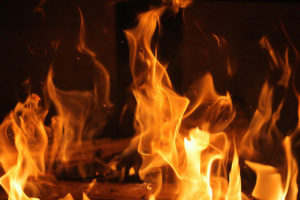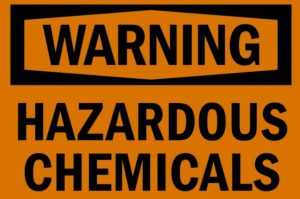Wood Burning Causes Climate Change: Incentivizing New Wood Stoves Isn’t the Solution
 Tucked away on page 102 of a report recently issued by the California Air Resources Board (CARB) is a remarkable statement: By 2030, residential wood burning is projected to be the single largest individual source of black carbon in California.
Tucked away on page 102 of a report recently issued by the California Air Resources Board (CARB) is a remarkable statement: By 2030, residential wood burning is projected to be the single largest individual source of black carbon in California.
When it comes to climate change, black carbon can be considered Public Enemy Number Two, with scientists stating that it is “…the second most important human emission in terms of its climate forcing in the present-day atmosphere; only carbon dioxide is estimated to have a greater forcing.” In the atmosphere, black carbon absorbs solar heat. This not only heats the atmosphere, it also melts the earth’s snowcaps and glaciers when these particles settle on the ground.
Eliminating or reducing wood burning is one of the easiest and most effective ways to curb climate change, but the same report from CARB goes on to say that they are considering incentivizing the replacement of old wood stoves with—wait for it—new wood stoves. Unfortunately, this cognitive dissonance is not unique to CARB. Ontario, Canada recently unveiled a similar program targeting black carbon and other short-lived climate pollutants that allocated $400 million for replacing old wood stoves with “new high-efficiency wood stoves.” Not surprisingly, the Hearth, Patio, and Barbecue Association, a trade group that lobbies on behalf of the wood stove industry for these wood stove changeouts, has hailed the Ontario program as “providing an economic boost”
While these wood stove changeout programs are undoubtedly good business for wood stove manufacturers and retailers, there are many reasons why they are a terrible idea for climate change.
First, if these programs instead incentivized the replacement of wood stoves with cleaner heating devices that run on natural gas or electricity, the result would be far greater reductions of black carbon and other short-lived climate pollutants. As a bonus, this would also have other benefits, including lower CO2 emissions, lower particulate emissions, and lower toxics emissions. This would be a win not only in terms of climate change, but also in terms of human health.
Second, the realized SLCP reductions from these so-called “wood to wood” conversions will be far lower than the reductions projected by CARB and others. Although EPA-certified wood stoves are predicted to have lower emissions of particulates, including black carbon, based on their laboratory certification values, it is openly acknowledged by the EPA and even by the wood stove industry that certification values do not correlate well with the in-home performance of wood heaters. In other words, the stoves are much dirtier in the real world than in the lab.
Third, the projected black carbon reductions from wood to wood conversions are based on the improved efficiency of EPA-certified wood stoves (i.e. less wood burned per BTU of heat generated) compared to conventional wood stoves—but this efficiency is unlikely to be realized in actual use, especially in temperate climates such as California. A more efficient EPA-certified wood stove may indeed generate more heat per unit of wood burned, but because wood stoves do not have thermostats, they continue to heat the home even after it has reached a comfortable temperature. When a home becomes too warm, the wood stove will be operated at less efficient settings as the user reduces the combustion air to the device. Even worse, the fire may be allowed to die when the house warms up, only to be restarted at a later time–generating massive start up emissions.
Finally, previous government-funded wood stove changeout programs provide sobering cautionary tales by not delivering the expected benefits. For example, every wood stove in the Libby, Montana area was changed out to EPA-certified wood stoves at a total cost of over $2.5 million. The 28% reduction in particulate pollution, which includes black carbon, was nowhere near the expected 56% reduction, and the contribution of wood smoke to ambient PM2.5 levels had not changed several years later. And in British Columbia, a total of 6067 old wood stoves were replaced as part of a change-out program. An in-depth evaluation of the program several years later noted, “…there has not yet been a clear reduction in fine particulate matter pollution coming from residential wood stoves in BC.” Had either of these programs been conversions to natural gas or electric heaters, the emissions would have plummeted.
It’s good news that governments are finally acknowledging the role that residential wood burning plays in climate change, and are ready to take action. Unfortunately, promoting more wood burning is not the way to do it.
 It has been well documented that wood burning devices create localized air pollution hot spots—but these neighborhood hot spots are often located far from official government air quality monitoring stations.
It has been well documented that wood burning devices create localized air pollution hot spots—but these neighborhood hot spots are often located far from official government air quality monitoring stations.





 In an effort to reduce air pollution from wood burning, government agencies worldwide have used public funds to subsidize supposedly cleaner burning devices, such as EPA certified wood stoves.
In an effort to reduce air pollution from wood burning, government agencies worldwide have used public funds to subsidize supposedly cleaner burning devices, such as EPA certified wood stoves. People buy EPA-certified wood stoves with the expectation that they’ll reduce air pollution. Ironically, they may be doing the exact opposite.
People buy EPA-certified wood stoves with the expectation that they’ll reduce air pollution. Ironically, they may be doing the exact opposite. Tucked away on page 102 of a
Tucked away on page 102 of a 